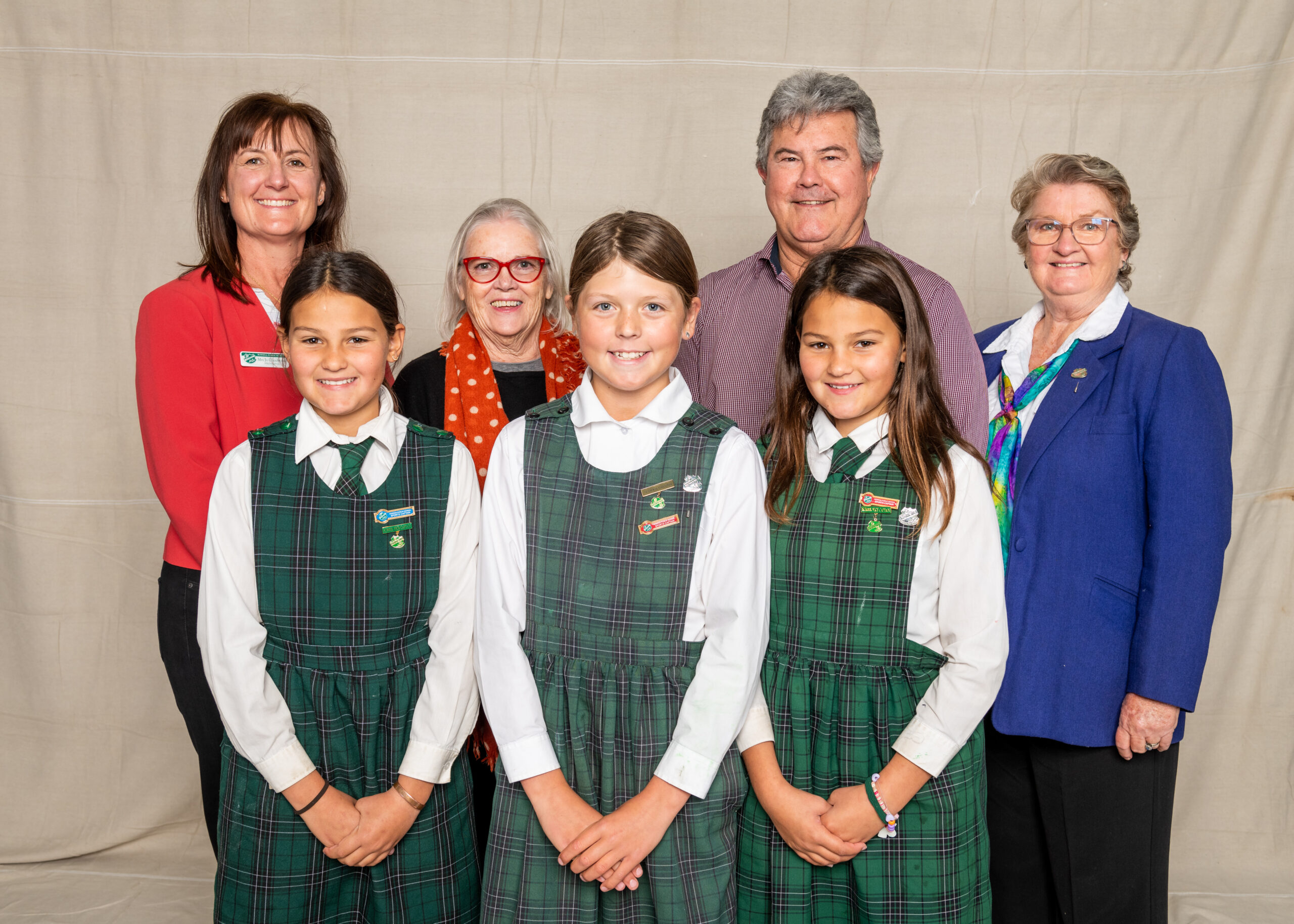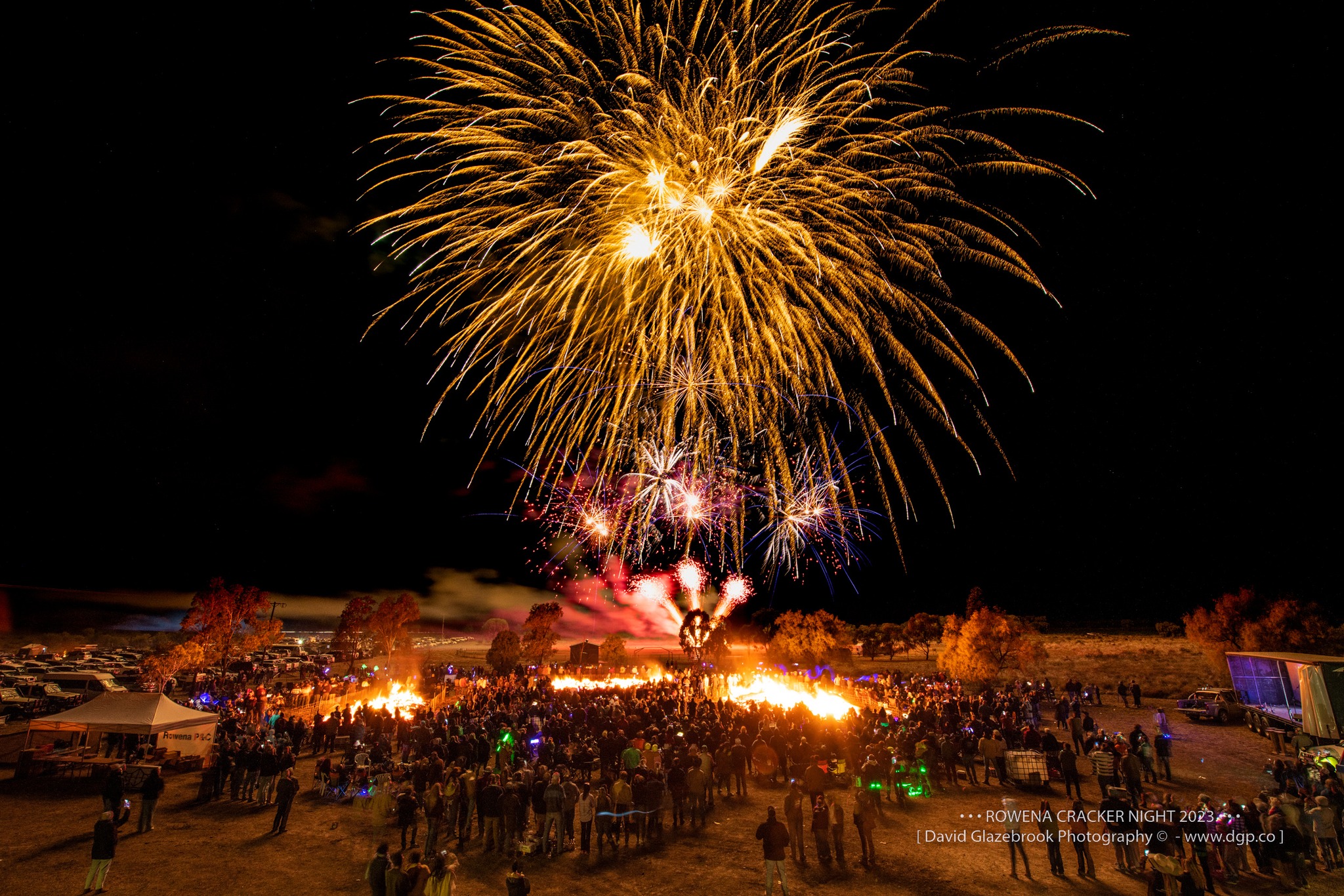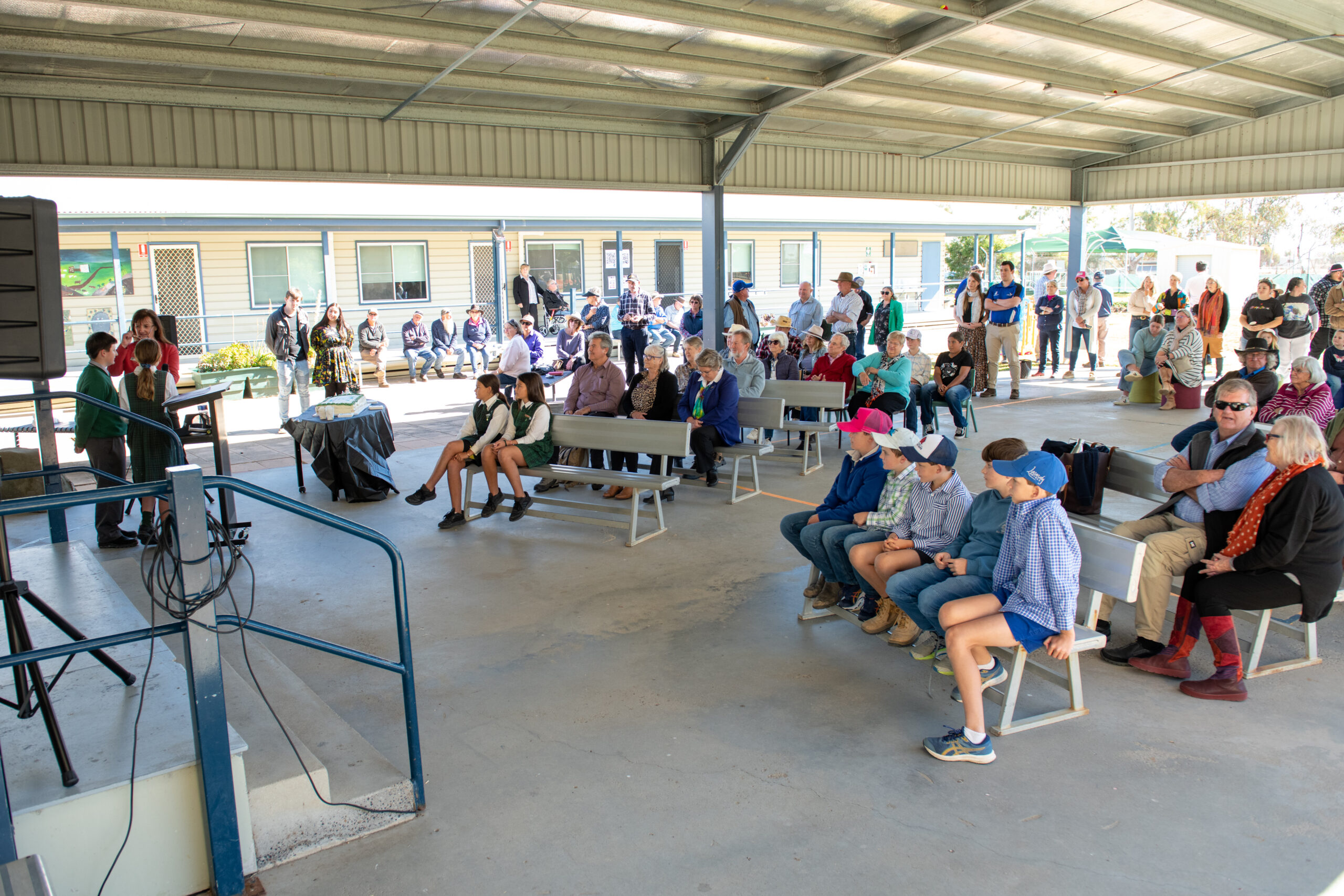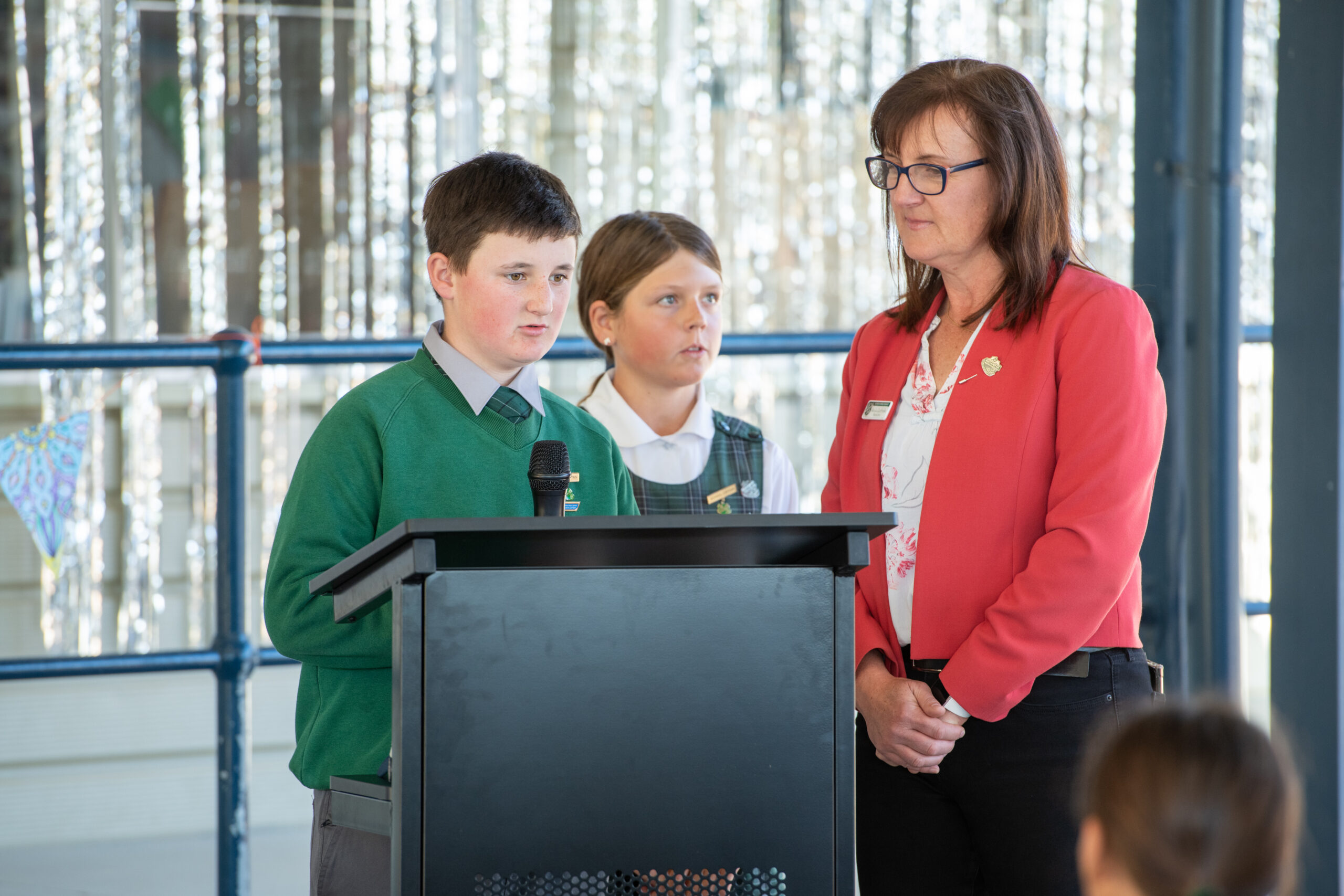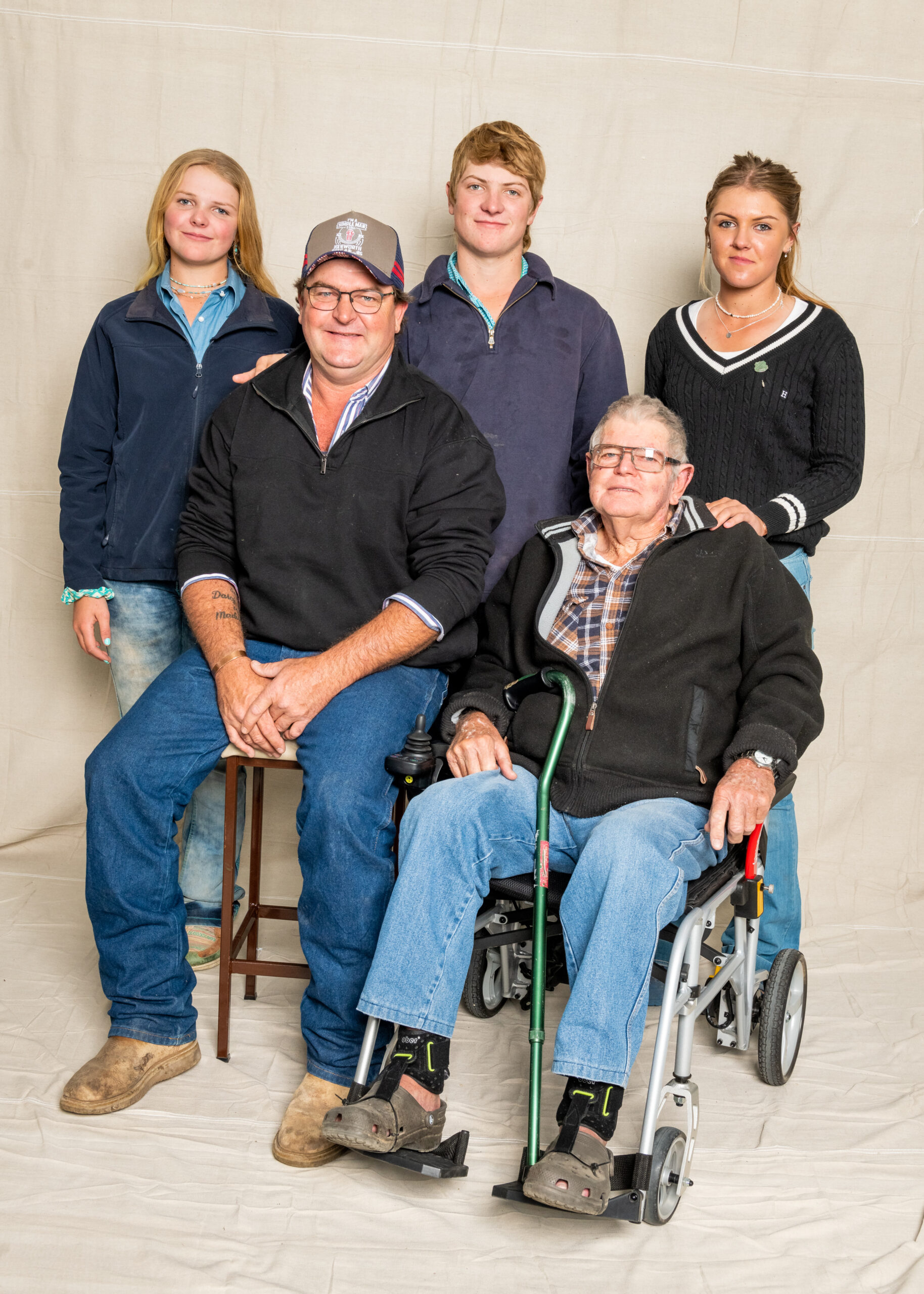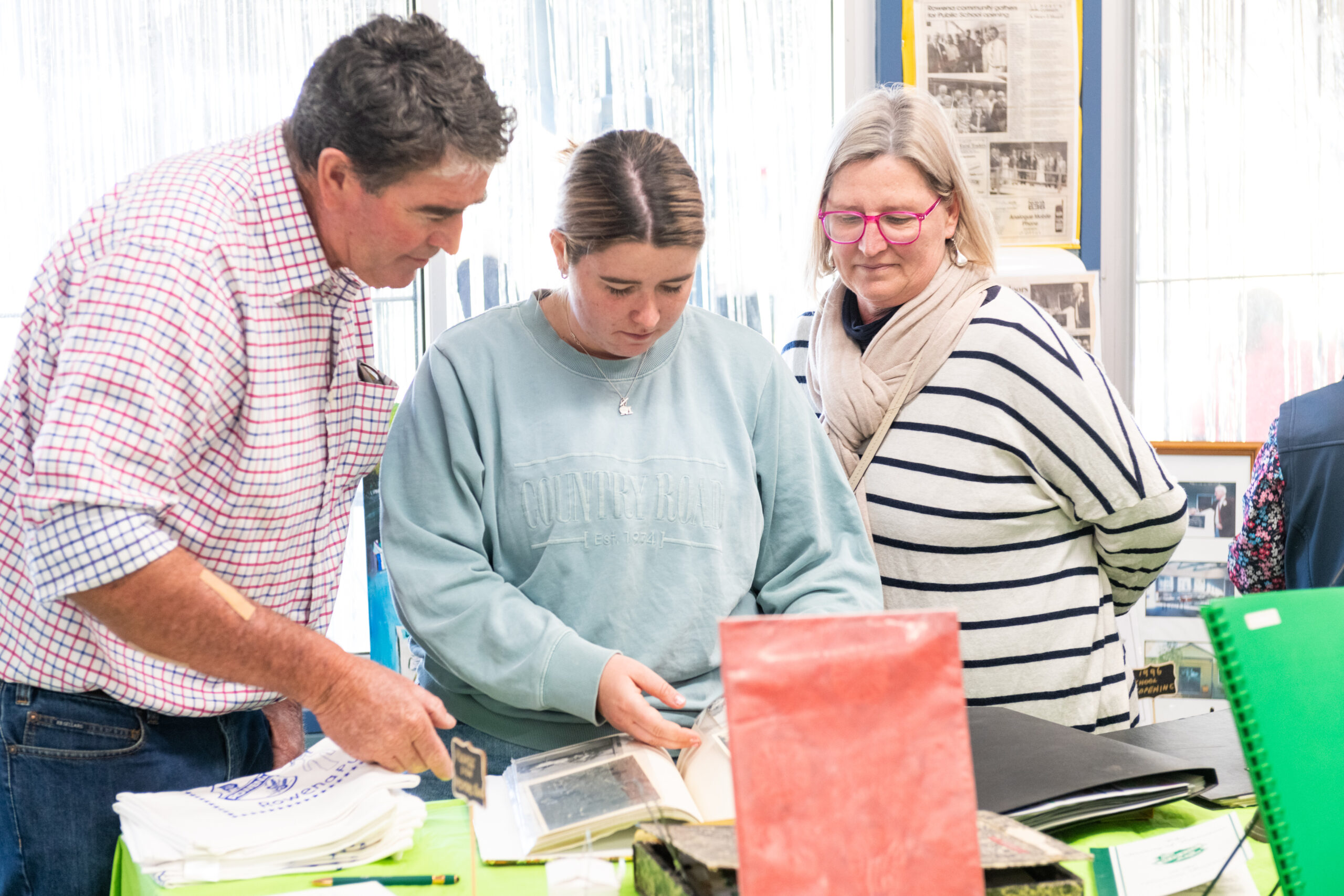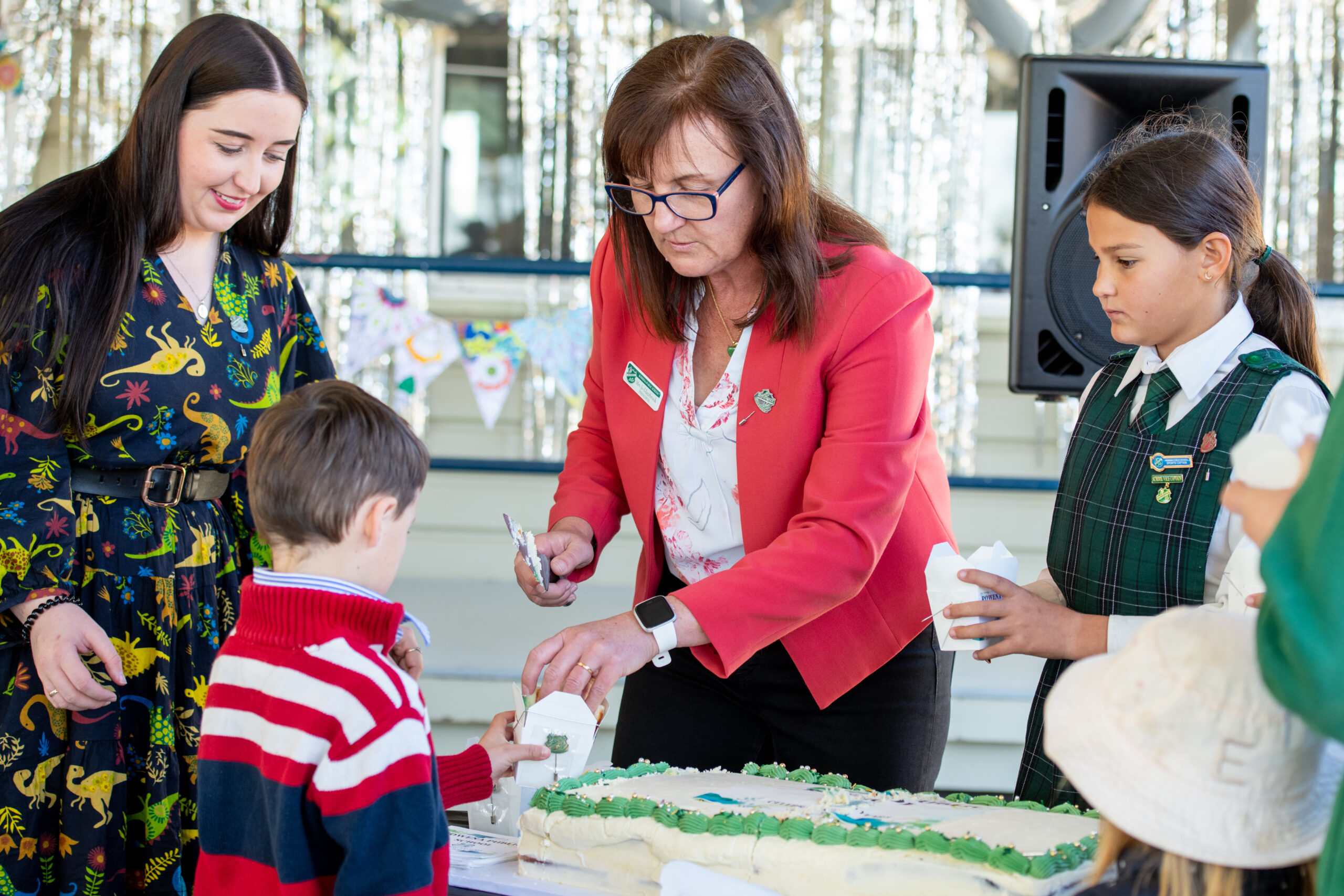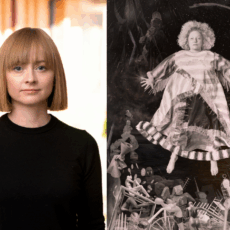Rowena Public School is the heart and soul of the village’s mighty community.
Like many small country towns, the school doesn’t just offer local children a brilliant education – it also serves as a gathering place where local residents, families, parents, and teachers create vital connections and long-lasting friendships.
“I think schools are the backbone of a small community,” said Jocelyn Cameron, a former RPS teacher, RPS parent, current RPS grandparent and local historian.
“In fact, the smaller the place the greater the importance.
“A lot of community things happen at the school – we had the Christmas tree there one year when the hall wasn’t available.”
The village’s devoted and resilient residents are well-known for rallying together to showcase one of the district’s most popular events – the June long weekend cracker night – a fundraiser for both the Rowena Public School and Preschool.
This year’s Rowena cracker night was once again a huge success with more than 1700 people welcomed through the gates, and 2023 was extra special with the school community hosting celebrations to mark 100 years of education in Rowena on the Sunday morning of the June long weekend.
“The weather could not have been more perfect with the sun shining in the morning and throughout the whole day for our centenary get together,” said RPS principal Jo Glazebrook.
“Dozens of people from around the district, past and present students and families and special guests, sat together, had a cuppa and chatted while looking at hundreds of photos from years gone by.”
A highlight of the day was the chance for attendees to take a trip down memory lane, viewing the impressive memorabilia and photos on display.
Mrs Glazebrook said some of the special guests at the centenary celebrations included mayor of Walgett Shire Council Jane Keir, director of educational leadership Jeremy Mills and former RPS teacher, RPS parent, current RPS grandparent and local historian Jocelyn Cameron.
“School captains Jean Shearer and Paddy Harris led the ceremony and worked together to cut the enormous cake which was enjoyed by all,” said Mrs Glazebrook.
“Thanks to everyone who visited and contributed to our display.
“The history and culture of our school is in good hands with our current students enjoying seeing their parents in past photos and learning about our school.
“There is a lot of love for this little school that seems to be getting stronger each year.
“The day did not end there.
“Rowena Cracker Night once again delivered a special night for our little town.
“The parents of this community are so very committed to ensuring the children of Rowena have every opportunity to succeed in their education by working hard to raise money.
“Hours and hours of preparation time, hours on the night and more hours in the clean up by a small group of people who catered to such an enormous crowd is phenomenal.
“Thank you parents of Rowena, you are all superstars.”
Mrs Cameron said, “It was wonderful to be involved in the celebrations, especially being asked to speak – I felt really honoured.”
During her speech, Mrs Cameron provided the crowd with an entertaining and fascinating historical snapshot of 100 years of education in Rowena including stories about the school’s first teacher, first bus run and first school uniform.
“There was no accommodation for the teacher at the newly opened Rowena School – he lived at the pub, if it was open, or boarded with local families,” she said.
“There was no fence around the school and no drinking water – a bucket covered with a tea towel was brought each day.”
Mrs Cameron, a keen local historian, shared snippets she’d uncovered from delving through old records and said the student population once peaked at 64 and explained the impact of seasonal changes and “the coming of cotton farming” on the school.
While buildings, infrastructure and resources at the school might have changed since it was opened in 1923, the dedication of parents, teachers and locals to lobby government and provide Rowena children with a fantastic education has remained the same – strong and steadfast over the years.
A copy of Mrs Cameron’s speech is below:
It’s an honour to be asked to speak today. RPS has had an up and down career during the last 100 years, with fluctuating student numbers attached to seasonal conditions and generational gaps, closing for eight years in the late 1930s and early 40s.
Here’s hoping it can continue existing for another 100 years.
Rowena Provisional School, as it was known then, opened for business at the beginning of the school year in 1923.
The single wooden building was 10 years old and had been moved the previous year from a closed school site near Wee Waa at Bundock Creek.
The building was pulled down, moved by train and reconstructed here for less than 200 pounds.
There were 25 students and one teacher, JL Cunningham.
There was no fence around the school and no drinking water – a bucket covered with a tea towel was brought each day.
Rowena district families had been lobbying the department of public instruction for 10 years for a school to be established in the village.
This followed the closure of the Oreel Provisional School (1900-1909), which was between the Telstra tower and the Thalaba bridge, and the Eton-Harrow Travelling School which operated in this area between 1908 and 1910.
There was no accommodation for the teacher at the newly opened Rowena School – he lived at the pub, if it was open, or boarded with local families.
The first house for a teacher was built in 1960 by the local community – the first teacher housing structure didn’t arrive until the end of 1971 – the one where the Glazebrooks live now.
Issues warranting mention in the State archives during the first 12 years of the school’s existence were mainly maintenance-related or environmental – upkeep on the building, “water closets” (as toilets were called!), rainwater tanks, the provision of a shelter shed and the swampy state of the playground after rain events.
In mid-1935, the department of education withdrew the teacher and the school was closed for six months.
At the start of the next year, it opened again but only for three months.
Parents were very unimpressed, but their protests fell on deaf ears.
The reason for the withdrawal of the teacher wasn’t stated in the archives, but I imagine it related to falling student numbers.
A subsidised school operated in the village (mostly in the school building) on and off for the next eight years. The school re-opened in August 1943. In 1955, it was elevated to Public School status, due to an increase in enrolments. The first bus run servicing the school began in that year and ran for three years.
The shelter shed was finally built in 1958, 35 years after the initial request.
In 1960, the classroom was extended by 10 feet (three metres) and a verandah added. Six years later, the school bus recommenced, and a school uniform was introduced. Student numbers had increased to warrant the appointment of a second teacher to the school in 1967 – as there was only one classroom, the Infants class operated at the hall for two terms, until a demountable classroom arrived. This building was onsite for 21 years, later serving as the staffroom and office.
In the late 1960s, minutes of Progress Association meetings show that the “cooling of the school” had begun – I imagine this meant fans.
The second bus run began in 1978.
The coming of cotton farming to the area brought an influx of families and therefore students – a third teacher was appointed in term 3 1981 (there were only three terms then).
Three more demountables and a mobile home appeared during the next two years, to house the extra students and staff – the peak student population was 64.
This spike in numbers was not to last very long, unfortunately.
In 1982, a suggestion was made to raise funds to build a pool at school, to allow the children to learn to swim without having to travel to Colly and to swim every day in hot weather.
Much community fundraising occurred over the next couple of years, with generous sponsorship from local businesses, in particular Namoi Cotton, who agreed to loan the required amount to make up the shortfall in cost of construction and then later, changed that loan into a donation. The pool was opened in term 1 1984.
From 1983 until 1988, student numbers dropped slowly and stayed low – in the space of a bit over four years, the number of full-time staff dropped from three to one.
By 1990, numbers had recovered to allow a second teacher to be appointed and stayed stable for more than 20 years. Student numbers were often in the mid-30s. The mobile home for a staff member departed the scene in 1987, to be replaced by the permanent cottage we have now.
The 1990s brought a period of expansion and prosperity for the school: in 1991 the School Council met for the first time, the first one in any school around here; the next year, the school bore was sunk, which lead to the installation of the underground sprinkler system & the planting of trees & turf; in 1994/5, the “new” school buildings were constructed/installed, one from scratch (the classroom block) and the other in five prefab sections (the office/staffroom/toilet block) – these had been a long time coming, having first been discussed more than 10 years previously.
More area was required when these buildings were planned than was available and in order for adequate playground space to be retained, the Shearer family kindly “sold” an adjoining block of land to the Dept. for the princely sum of $1 (a donation wasn’t permitted); by 1996, all the demountables were gone; in that year also, the new buildings were officially opened, with many ex-students and staff returning for the occasion.
Between the turn of the century and 2010 (the noughties), significant improvements were made to the appearance of the exterior of the buildings and the grounds – the ramp was relocated from outside the staffroom to the front of the school, the gardens were remodelled, new shade areas were constructed, the exterior was painted with a new colour scheme and the COLA (Covered Outdoor Learning Area) was built.
When the Building the Education Revolution occurred, Rowena School opted for a renovation instead of a new build – this took a great deal of convincing of the powers that be by the Principal of the day, but he was successful and the result was much more useful to the students.
Student numbers and the school’s status have fluctuated quite a bit over the last 10-15 years. Parent and community fundraising have funded extra teacher hours when numbers have been low.
Currently, there are 20 students and the school’s status is TP2 (teaching principal level2).


